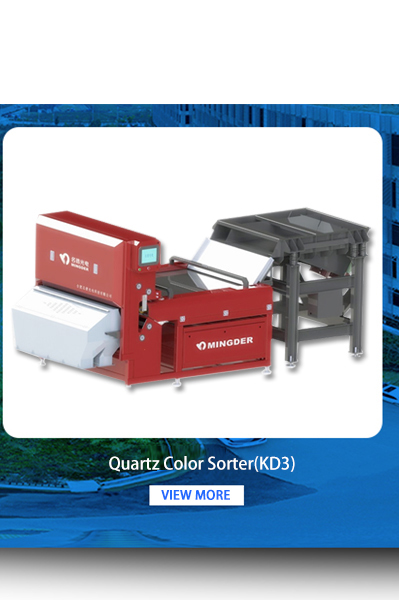 Working Principle of Ore Color Sorter
Nov 24, 2023
Working Principle of Ore Color Sorter
Nov 24, 2023
Ore Color sorting machines are innovative pieces of equipment that play a vital role in ore industries, the machines utilize advanced technology to sort various kind of minerals, such as quartzs, calcites, calcium carbonates,etc., based on their color. But have you ever wondered how these machines actually work? In this section, we will delve into the working principle of a ore color sorting machine and explore the intricate process behind its functionality.
The operation of a color sorter machine can be categorized into four distinct systems: the Feeding System, Optical System, Control System, and Separation System.
Feeding System:
Object Introduction: Objects to be sorted are fed into the color sorter machine using a hopper or conveyor system.
Even Distribution: The system ensures even spreading of objects in a single layer for optimal visibility during sorting.
Optical System:
Illumination: A suitable light source, evenly illuminates the objects for consistent lighting conditions.
Sensing and Imaging: Optical sensors or cameras capture images of the objects, with monochromatic or multispectral options depending on color detection needs.
Control System:
Image Processing: Captured images undergo processing using specialized software and algorithms to analyze color information and extract relevant features.
Color Classification: The system compares extracted color features against predetermined criteria, classifying objects into distinct color categories or grades.
Separation System:
Sorting Mechanism: Once objects are classified based on color, a sorting mechanism is activated to physically separate them into different streams or containers.
Ejection or Diversion: In case an object is in the wrong color category, the sorting mechanism diverts or removes it from the main stream to ensure the final output contains only objects of the desired color.
Collection and Disposal: Sorted objects are collected in separate containers or conveyed to different locations based on color. Rejected objects are typically disposed of or directed to a separate waste stream.
These four systems work collaboratively to enable rapid and continuous high-speed sorting operations, with the precision and efficiency of the color sorter machine dependent on the quality of each system's components and the coordinated control of their functions. It's worth noting that specific details may vary among different types and models of color sorter machines, and advanced systems may incorporate additional features based on specific application requirements.
 Working Principle of Ore Color Sorter
Nov 24, 2023
Working Principle of Ore Color Sorter
Nov 24, 2023